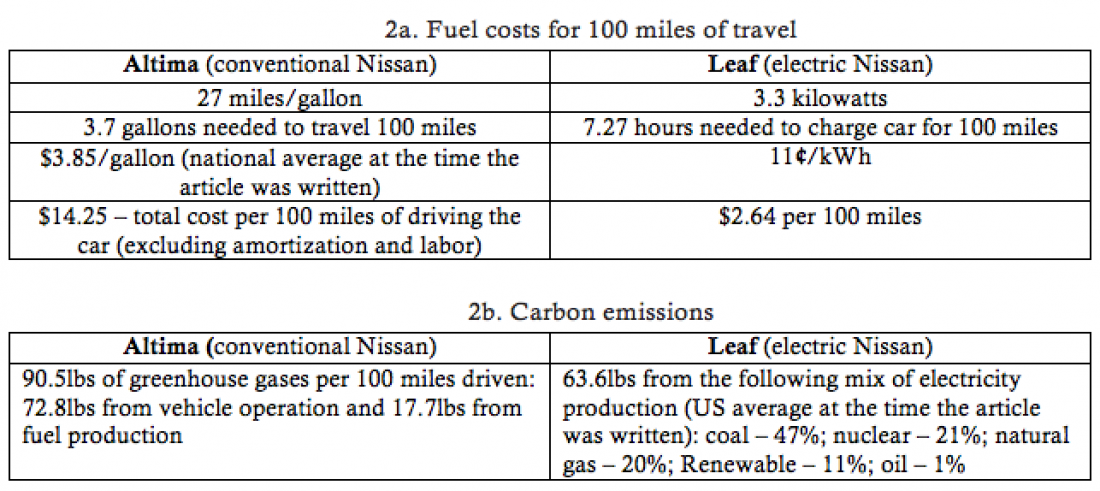Close to three weeks ago (February 24th), I watched a 60 Minutes segment on electric car production in China. I was impressed with the Chinese efforts to promote the transition, including waiving the high tax on license plates in Shanghai (see my August 18, 2015 blog). 60 Minutes explained that this was an attempt to reduce the horrendous air pollution in the country’s large cities. The opening picture, which I found on the blog EV World, summarizes the issue (although in that blog’s context, it is used ironically, to demonstrate what the authors view as a mischaracterization). Electric cars obviously run on electricity, and as long the power sources for that electricity are not clean, the environmental arguments for electric cars don’t hold. My next few blogs will focus on this issue.
Figure 1 and Table 1, taken from the Wikipedia entry on electric cars, summarize the extent to which electric cars have penetrated the market.
 Figure 1 – Global annual sales of electric passenger cars
Figure 1 – Global annual sales of electric passenger cars
Table 1 – Global sales of the top electric car producers and their countries of origin

The Wikipedia entry has a section on the environmental aspects of these cars:
Environmental aspects [edit]
Electric cars have several benefits over conventional internal combustion engine automobiles, including a significant reduction of local air pollution, as they do not directly emit pollutants such as particulates (soot), volatile organic compounds, hydrocarbons, carbon monoxide, ozone, lead, and various oxides of nitrogen.[61][62][63]
Depending on the production process and the source of the electricity to charge the vehicle, emissions may be partly shifted from cities to the material transportation, production plants and generation plants.[1] The amount of carbon dioxide emitted depends on the emissions of the electricity source, and the efficiency of the vehicle. For electricity from the grid, the emissions vary significantly depending on your region, the availability of renewable sources and the efficiency of the fossil fuel-based generation used.[64][65][66]
The same is true of ICE vehicles. The sourcing of fossil fuels (oil well to tank) causes further damage and use of resources during the extraction and refinement processes, including high amounts of electricity.
In December 2014, Nissan announced that Leaf owners have accumulated together 1 billion kilometers (620 million miles) driven. This translates into saving 180 million kilograms of CO2 emissions by driving an electric car in comparison to travelling with a gasoline-powered car.[67] In December 2016, Nissan reported that Leaf owners worldwide achieved the milestone of 3 billion kilometers (1.9 billion miles) driven collectively through November 2016.[68]
Part of my objective in teaching classes on climate change to a student population that does not necessarily have a background in the sciences (many of them have never taken any chemistry or physics) is to enable them to judge environmental claims from first principles. Below, I am giving two examples from this effort that are relevant to the environmental claims of electric cars.
Example 1
In Figure 2 below, the only parameter directly measured is fuel economy. I ask students to quantitatively determine the assumptions needed to calculate the other numbers in the banner.
 Figure 2 – A new sticker on fuel economy and the environmental impact of cars was introduced in May 2011
Figure 2 – A new sticker on fuel economy and the environmental impact of cars was introduced in May 2011
Try to do it and you will quickly find that the task is impossible—not because you lack the background or haven’t taken my course but because of the size of the small print at the bottom of the sticker.
Here is what you are missing:
Actual results will vary for many reasons, including driving conditions and how you drive and maintain your vehicle. The average new vehicle gets 22 MPG and costs $12,600 to fuel over 5 years. Cost estimates are based on 15,000 miles per year at $3.70 per gallon. MPG is miles per gasoline gallon equivalent. Vehicle emissions are a significant cause of climate change and smog.
With this information, the exercise should be easier. Let me know in the comment section how you are doing with it.
Example 2 – Comparison of energy use and cost of an electric vehicle vs. a conventional vehicle
Table 2 – Fuel costs for 100 miles of travel and carbon emission of conventional and electric Nissan vehicles (data from The New York Times, May 29, 2011).

Calculate the data in Table 2b from the data in Table 2a and pay attention to how you get there. Let me know in the comment section what you find. Tune in next week for my take.


The article discusses the growing significance of electric cars in mitigating urban air pollution and reducing carbon emissions, particularly in countries like China. It highlights efforts such as tax incentives and advancements in electric vehicle technology as critical steps towards environmental sustainability. The discussion on the environmental benefits of electric cars versus traditional combustion engine vehicles underscores the importance of transitioning to cleaner energy sources for transportation. Overall, the article encourages a deeper understanding of the environmental impacts and benefits of electric vehicles, aiming to inform readers and promote sustainable choices in automotive technology.